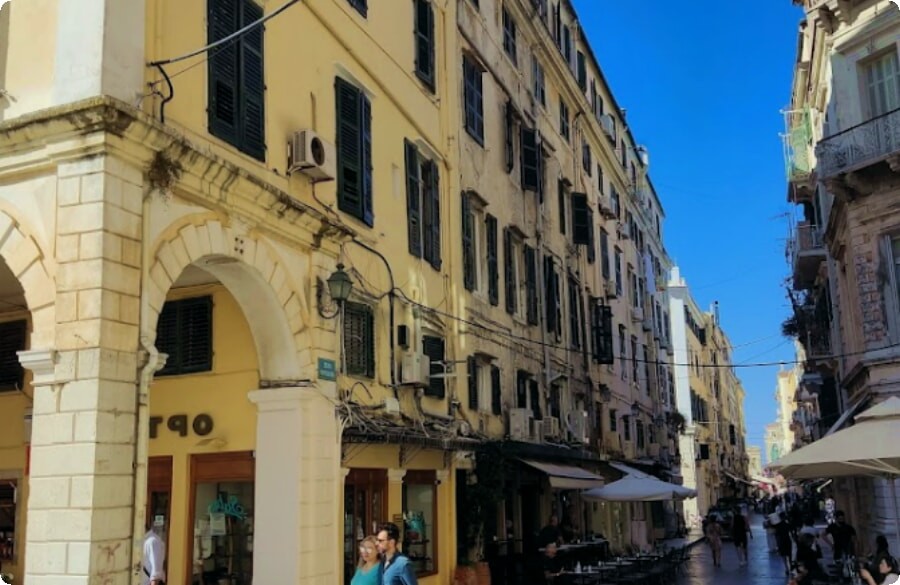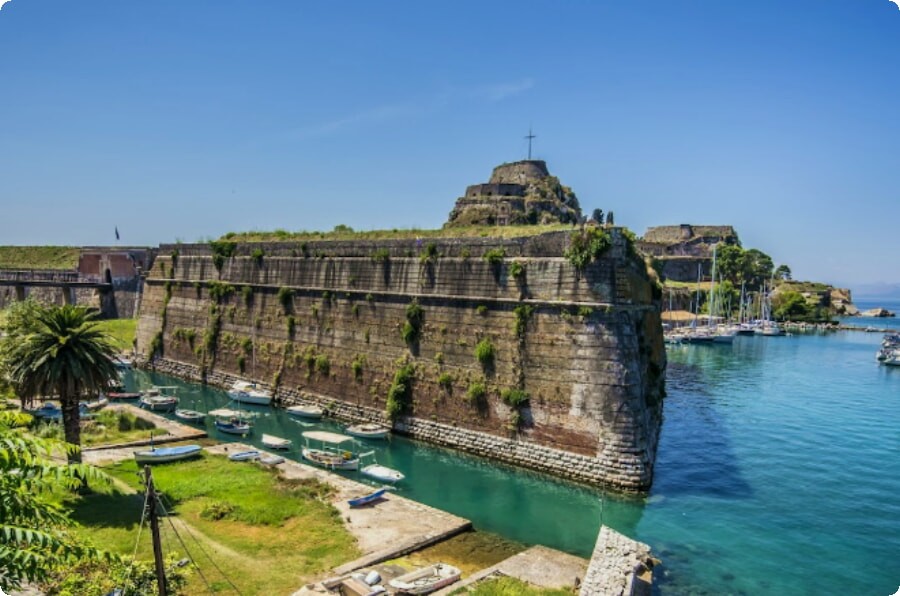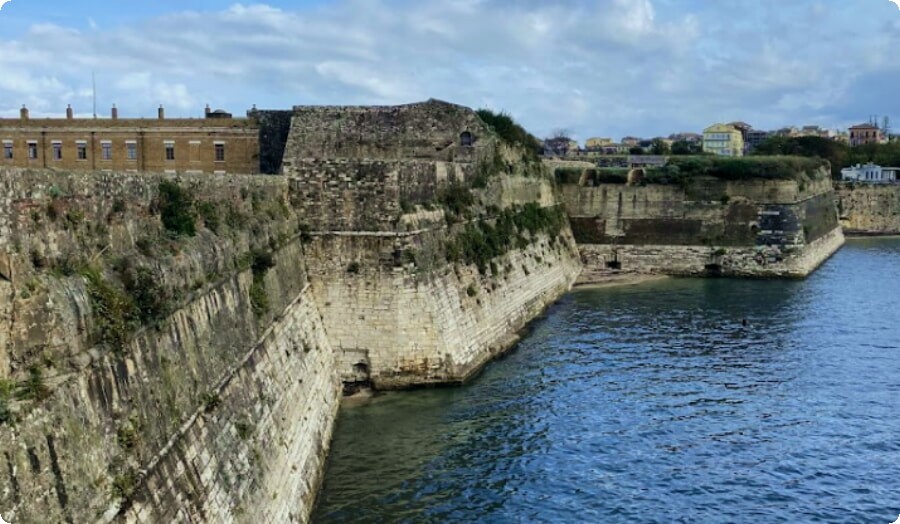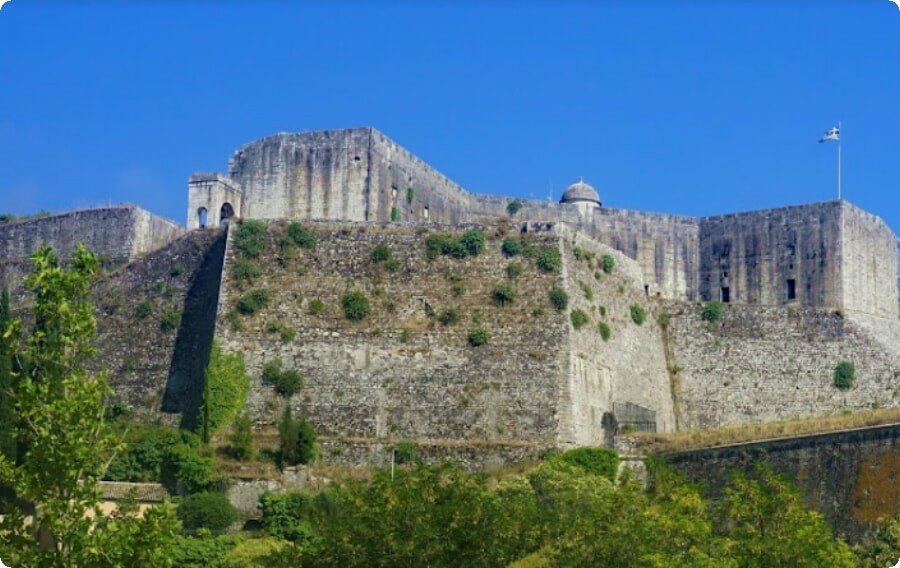The historic center of Corfu is divided by two fortresses. Along the east side there is an old one on the sea, while on the west side there is a new one. In the past, they were connected by large walls so that the inhabitants could live safely inside. But the walls were destroyed, and today there are only two of the four gates of the city.
One of them is called "Porta di Spilia" (Spilia gate), also known as Boati's arch, right in front of the old port. The second is the San Nicola gate, located below the level of the coastal road, at the end of the esplanade.
To see more interesting places, tourists prefer to use car rental services in Greece. For example, in Corfu you can book a compact car from 12 euros per day, and in Athens from 14 euros per day.

Old fortress
When the Old Town of Corfu was destroyed by the invaders in the 6th century, the survivors decided to build it again, but in a safer area. Later, the city was saved by building a fortress around it, which occupies the entire small island in the eastern part of Corfu.
The entrance to the Old Citadel is located directly opposite the Liston Hotel, next to the city's esplanade. Massive bastions, a real masterpiece of military architecture in the old days.
To get inside, you need to cross a short bridge that connects the fortress with the city of Corfu. The large moat that separates the fort from the city is today used as a mooring for fishing boats.

A short visit will make it clear why this area was the perfect place to build a fortress. Since it is surrounded by the sea, it was actually used both to protect the city of Corfu and to check the Near Coast. The construction of this fortress was started under the Byzantine rule, and later, under the Venetian occupation, the structure was changed in order to better protect the city of Corfu from the Turkish troops.
The Venetians, during their occupation, also worked to make the ramparts stronger and smoother.
The statue in honor of the commander Schulenburg (built by the Venetians in memory of the battle with the Turks) is located next to the bridge, through which visitors can get inside the fortress.
From here, a covered staircase leads up to the hearth of the citadel. The corridor on the left will lead to the higher part of the fortress. At the end of the corridor there is also a small path that leads to the old barracks, and along the south side of the hill you can visit the small Church of St. George.

This small church was built in 1840 by the British and was later decorated with icons coming from the Church of St. Spyridon, which is still present in the Old Town of Corfu.
There are various buildings inside the fortress, such as the prison, built in 1786 by the Venetians and enlarged in the second moment by the English. Not far from the prison, you can also visit the military church called "Madonna Carmini" and the old military hospital, today converted into a music school.
Also inside, next to the main gate, there is a historical archive that collects more than 6 centuries of Corfu history. It houses many old documents and the Byzantine Collection of Corfu, which includes icons, sculptures and paintings from the Byzantine period.
In addition to the historical and cultural point of view, the old fortress also offers stunning views of the city of Corfu and the Ionian Sea between the island and the mainland.
New fortress on Corfu Island
The new fortress (Saint Mark's fortress) on the island of Corfu is also called the fortress of San Marco. It was built by the Venetians and is located in close proximity to the old harbor of the city. This impregnable citadel was completed shortly after the infamous Turkish invasion. The design and construction was undertaken by the famous Italian military engineer Ferraute Vitelli.
The fortress played a key role in protecting the city of Corfu and its inhabitants. It is a complex network of compartments and galleries. The ramparts were built by the French and then by the British colonial rulers who completed the entire construction.

The fortress has a dry moat that meanders along its western side, which is typical of the architectural style of the 17th century. The moat starts from where the vegetable market is currently located and ends at the New Harbor. Of particular importance are the two winged lions of Saint Mark, which, by the way, were the official emblem of Venice along with two separate Venetian inscriptions.
The two main entrances to the bastion seem to have somehow withstood the ravages of time and are still very well preserved. The first gate overlooks the square of the old harbor, and the second - to the south. Both gates are replete with the official emblem of Venice, that is, the winged lion of the Saint. Mark. Part of the fortress was destroyed by the then British colonial rulers in accordance with the 1864 agreement that united Corfu with the rest of Greece.
